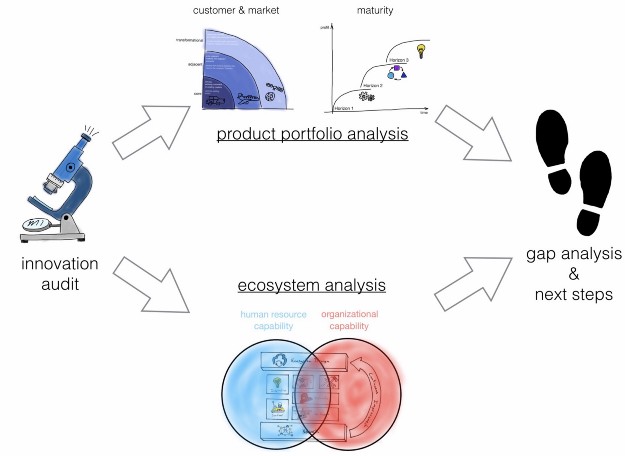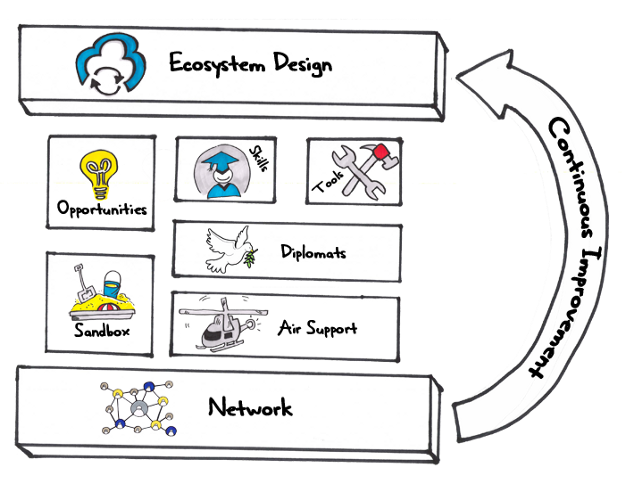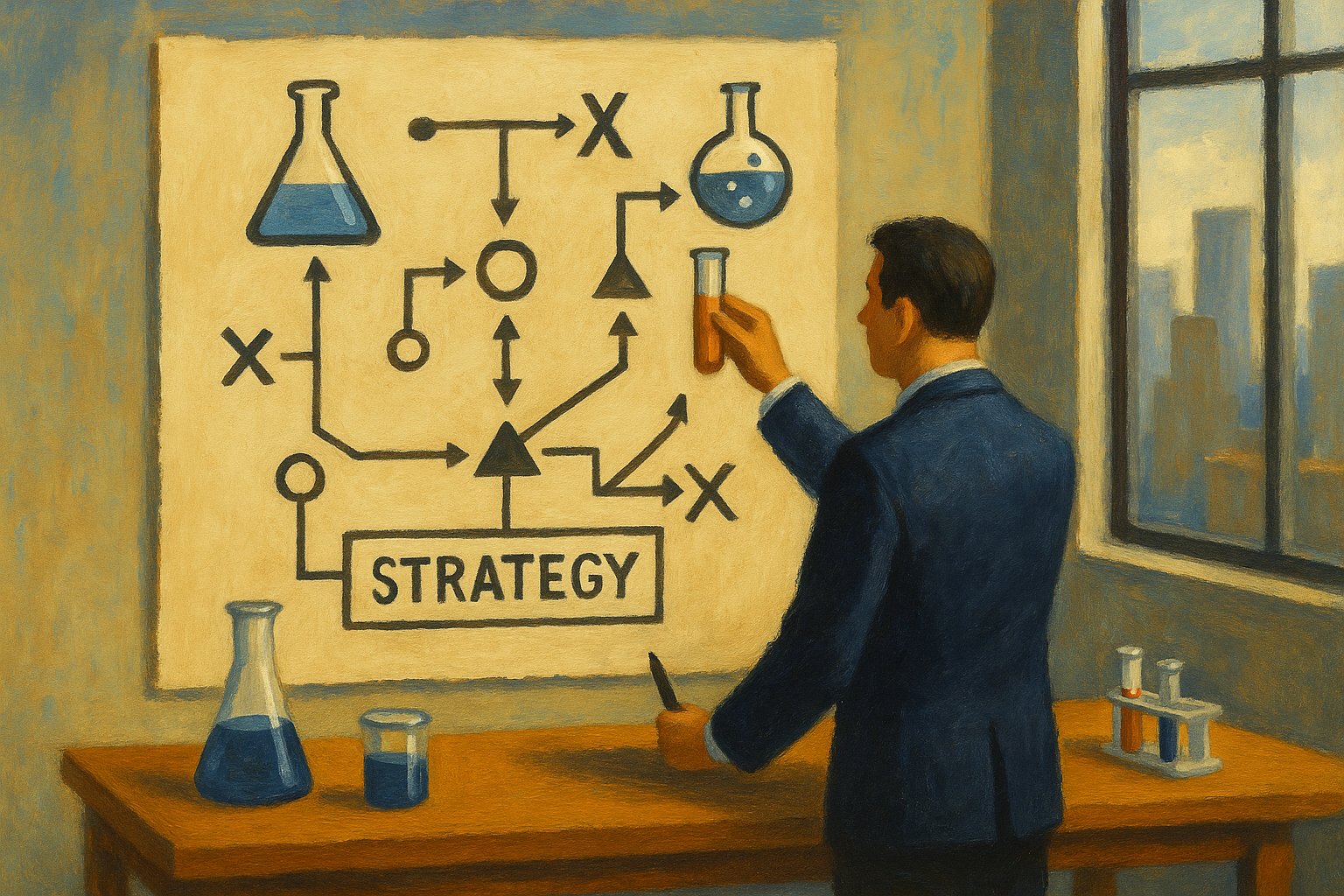Prescribing what the ecosystem needs not what it wants
There are currently over 6,000 drugs approved by the FDA in the United States. You can only be bewildered if upon entering a doctor’s office and even before stating your symptoms, the medic hands you a prescription containing the most commonly prescribed drugs from the FDA list. If this was not bad enough, picture a situation where the doctor starts prescribing you drugs (again only the most popular ones) based solely on symptoms you describe, without him doing any further examinations.
Fortunate enough — aside from the fact that corporate innovation consultancy is not a ‘life and death’ business like healthcare — consultants don’t have a list of 6,000 ‘remedies’ to chose from when dealing with a ‘patient’ that complains about not being innovative enough or losing market share to more younger competitors.
But still there are countless examples of ‘the wrong drug’ being prescribed without any proper diagnosis. The most commonly prescribed ‘drugs’ in corporate innovation: a corporate acceleration program, innovation workshops, startup partnerships, and investment in startup acceleration programs. The mistake can usually be traced back to either the consultant not fully understanding the needs of the client, or the client being overly focused on cost cutting hence unwilling to invest in an innovation audit showing the real needs of the ecosystem opposed to the perceived needs (what he wants).
For an innovation audit to be useful it needs to do an in-depth analysis of all the components of the company’s innovation ecosystem and not limit itself to the most obvious ones.

The audit should look at a company’s portfolio, its human resources, and organizational capabilities. A good innovation audit will be one that results in a conclusive gap analysis followed by a clear action plan.
If, for the company’s portfolio part of the audit, things are straightforward through the use of models such as: Three Horizon model, Innovation Ambition Matrix or the 4-by-3 Portfolio Mapping Framework.
When it comes to the capabilities-part, things are complicated due to the entanglement of human resource capabilities, organizational capabilities, tangible and intangible elements.
Before auditing the innovation capabilities of the enterprise, start by dividing them into human resources and organizational. The segregation of the ecosystem’s elements is important because it will dictate the auditing method and tools you’ll be using. Even though it is fair to assume that interviews coupled with scorecards are going to be the most used tools, for some elements they are not enough.

To guide your work when engaged on such complex projects I encourage you start from Tristan Kromer’s ecosystem model (or any other similar one) and segregate the elements as follows:
Organizational capabilities bucket:
- Tools
- Sandbox (and selection criteria for ideas to be implemented)
Human resource capabilities bucket:
- Skills
- Diplomats
- Air support
Borderline bucket:
- Inspiration
- Network (incl. organizational structure)
- Ecosystem design
Although more top level, another avenue of analyzing a company’s innovation ecosystem is to look at some leading indicators such as:
- cost of failure/learning in the unit of time (basically how many unsuccessful products have been launched in a predefined unit of time),
- average corporate-wide time-to-market,
- time-to-market in individual departments,
- average time required to react to market shifts (changes in customer preference or implementation of new technologies),
- percentage of ideas implemented (or adopted by various business units) from the total ideas generated,
- other innovation accounting KPIs
Even though these indicators can paint a clear picture of the past and present situation of the company’s innovation ecosystem, they can’t explain what caused that situation to occur (the ‘why?’), therefore you should start an in-depth analysis.
Sometimes the direct causal link between a KPI reading and an ecosystem element is easy to be seen (e.g.: A high time-to-market can be interpreted as low skilled workforce, outdated tools or even the absence of a clear governance system embodied by the lack of air support). However one should bare in mind that ecosystems are not single cause-and-effect systems and the complex interdependence and inter-connectivity of the elements requires a complex analysis.
Equality important to the Innovation Audit are the outcomes which need to transcend the classical gap analysis, and move more towards serving as a bedrock for the development of an innovation thesis. (if you are interested in developing an innovation thesis check out The Corporate Startup book where we have an entire chapter dedicated to this topic)
Successful innovation requires more than just processes transformation, it calls for the entire organization to have an innovative ethos. This includes the need to have an appropriate HR strategy, an appropriate structure, demonstrable executive level support, and a culture built around innovation. An innovation audit needs to have the full support of the executive suit if it is to uncover ecosystem blockers preventing the company from achieving its growth goals.
Innovation audits are not just formalities or corners to be cut like MRI scans are not irrelevant procedures; an innovation audit is an essential step in the process of creating a customized treatment for the precise needs of the ecosystem.
If you want to know more about our book, or just need help engaging your organization in innovation auditing, please drop me a line at [email protected] or chat with me on Twitter.





